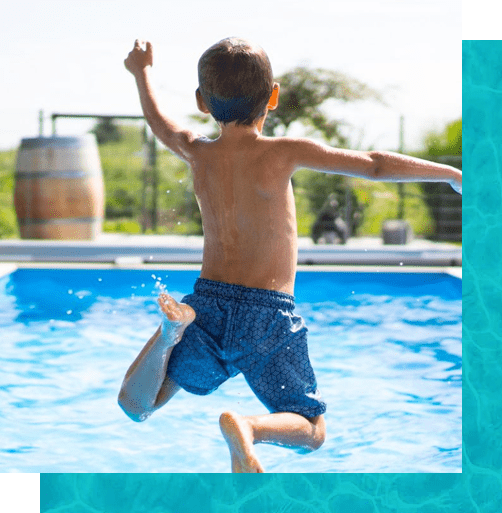Saltwater pools have gained popularity in recent years due to their lower chlorine levels, gentler feel on the skin, and easier maintenance. However, just like traditional chlorine pools, saltwater pools require regular care and attention to keep the water balanced and the pool equipment in top condition.
If you’re a saltwater pool owner or considering converting your pool to saltwater, understanding the unique maintenance requirements is key to enjoying a clean and healthy pool.
1. Understanding How Saltwater Pools Work
Before diving into the maintenance specifics, it’s important to understand how saltwater pools differ from traditional chlorine pools. Saltwater pools still rely on chlorine to sanitize the water, but instead of adding chlorine manually, the pool has a salt chlorine generator. This system converts salt into chlorine through a process called electrolysis, keeping the water sanitized with lower chlorine levels.
One of the main advantages of saltwater pool maintenance in Long Island is the lower concentration of chlorine, which results in less harsh water that is gentler on the skin, eyes, and hair. However, this doesn’t mean a saltwater pool is maintenance-free—it just requires a different approach to care.
2. Maintaining the Right Salinity Levels
Keeping the salinity level within the proper range is the foundation of saltwater pool maintenance. The ideal salinity range for a saltwater pool is typically between 2,700 and 3,400 parts per million (ppm), depending on the manufacturer’s recommendations for your salt chlorine generator. Maintaining the right salinity level is essential for your generator to produce enough chlorine to sanitize the pool.
How to Check and Adjust Salinity:
- Use a saltwater test kit or a digital salt meter to check your pool’s salt levels regularly, especially after heavy rain or topping off the pool with fresh water.
- If the salinity is too low, add pool-grade salt to raise the levels. Be careful not to add too much, as it can take time for the salt to dissolve and distribute evenly throughout the pool.
- If the salinity is too high, dilute the pool water by partially draining it and refilling it with fresh water.
3. Monitoring Water Chemistry
Saltwater pools still require regular testing of water chemistry to maintain a safe and clean swimming environment. In addition to salinity, you’ll need to monitor pH, alkalinity, calcium hardness, and chlorine levels.
Key Water Chemistry Levels for Saltwater Pools:
- pH: The ideal pH for a saltwater pool is between 7.2 and 7.8. Saltwater tends to raise pH over time, so you may need to adjust it more frequently with a pH decrease (muriatic acid) to keep it balanced.
- Alkalinity: Aim for an alkalinity level of 80 to 120 ppm. Alkalinity helps stabilize pH levels, so keep it in the correct range to avoid pH fluctuations.
- Chlorine: Although the salt chlorine generator produces chlorine, it’s important to monitor chlorine levels regularly. The ideal chlorine level is 1 to 3 ppm.
- Calcium Hardness: Aim for calcium hardness levels of 200 to 400 ppm to prevent scaling on pool surfaces and equipment.
Testing water chemistry at least once a week is crucial for keeping your pool water balanced and avoiding problems like algae growth, cloudy water, or corrosion.
4. Cleaning and Maintaining the Salt Chlorine Generator
The salt chlorine generator is the heart of your saltwater pool’s system, and it requires regular care to function properly. Over time, minerals like calcium can build up on the generator’s electrolytic cell, reducing its efficiency in producing chlorine.
Steps for Cleaning the Generator:
- Turn off the pool pump and generator.
- Remove the electrolytic cell from the generator housing.
- Inspect the cell for mineral deposits or scaling.
- If necessary, clean the cell using a cell cleaning solution or a mixture of one part muriatic acid to four parts water. Soak the cell for 15-20 minutes to dissolve the deposits.
- Rinse the cell thoroughly with fresh water before reinstalling it.
Regularly cleaning the generator will prolong its lifespan and ensure that your pool stays properly sanitized. Check the manufacturer’s recommendations for cleaning frequency, but generally, the generator should be inspected and cleaned every 3-6 months.
Conclusion
Maintaining a saltwater pool requires attention to detail, but with the right approach and regular upkeep, you can enjoy a clean, safe, and crystal-clear swimming experience. By balancing the salinity, monitoring water chemistry, cleaning the salt chlorine generator, and maintaining the pool and its equipment, you’ll ensure that your saltwater pool remains a relaxing oasis throughout the season.
With these tips, you can confidently manage your saltwater pool’s unique needs, making your maintenance routine smooth and efficient.
FAQs
1. How often should I check the salinity in my saltwater pool?
It’s recommended to check the salinity level at least once a month or after heavy rain or adding fresh water, as these factors can dilute the salt content.
2. Can I use regular salt for my saltwater pool?
No, you should only use pool-grade salt specifically designed for saltwater pools. Regular table salt or rock salt may contain additives that could damage your pool system.
3. How long does a salt chlorine generator last?
With proper care and maintenance, a salt chlorine generator can last 3-7 years. Regular cleaning and checking for scaling will help extend its lifespan.




